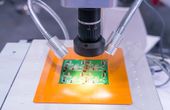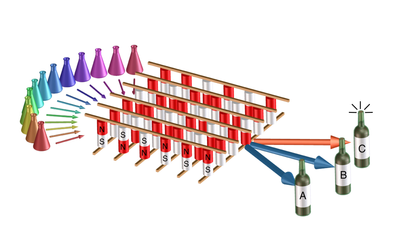STMicroelectronics AEKD-AICAR1 Automotive AI Kit
Delivering automotive AI computation on the edge by combining pre-trained neural network code with a simple microcontroller-based platform to enable AI-enhanced ADAS and car state classification capabilities.
Technical Specifications
| AI processing hardware | AEK-MCU-C4MLIT1–SPC58EC Chorus MCU board |
| Flash memory | 4 |
| Display | AEK-LCD-DT028V1–SPI-based TFT LCD |
| Sensor integration | STEVAL-MKI206V1–Adapter board with AIS2DW12 digital motion sensor |
| Power source | Any 12V power supply, or eight AA batteries |
| Dimensions | 28 x 18 x 7 |
| Applications | Automotive AI on the edge, ADAS, predictive maintenance |
Overview
The STMicroelectronics AEKD-AICAR1 Automotive AI Kit provides onboard AI capabilities for car state classification. It combines pretrained neural network models with simple embedded systems hardware to deliver a cost-effective means to execute AI calculations locally. The AEKD-AICAR1 AI Kit is integrated into vehicles as an ECU node and works in conjunction with other STMicroelectronics MEMS sensors to integrate AI-assisted car state classification and Advanced Driver Assistance Systems (ADAS) capabilities into car platforms.
Automotive AI Computation on the Edge
Cloud-based AI processing is a cost-effective means to integrate AI capabilities into any platform. However, that isn’t an ideal solution for automobiles, which require the reliability and responsiveness of significantly more expensive onboard AI computational hardware. The AEKD-AICAR1 Automotive AI Kit bridges the gap between these two extremes by flashing a pretrained neural network code onto the AEK-MCU-C4MLIT1–SPC58EC Chorus MCU board.
This allows the relatively simple microcontroller based onboard hardware to perform AI-based car state classification operations without the need to equip vehicles with powerful AI-capable hardware, or to offload AI computation to cloud-based infrastructure. The AEKD-AICAR1 Automotive AI Kit’s long-short term memory (LSTM) recurrent neural network (RNN) incorporates the ability to modify or retrain embedded neural network models, which allows the hardware to be used for various applications such as ADAS, automotive predictive maintenance, car state classification, and AI-enhanced integration of MEMS sensors into vehicles.
Pre-Trained Neural Networks on an MCU
At the heart of the AEKD-AICAR1 hardware kit lies the SPC58EC Chorus microcontroller, which interfaces with STMicroelectronics MEMS Accelerometers through the AEK-CON-SENSOR1 MEMS sensor connector. This allows the AI-enhanced MCU to process acceleration and deceleration parameters along a three-axis reference system, while working in conjunction with the STEVAL-MKI206V1–adapter board equipped with the AIS2DW12 digital motion sensor.
The SPC58EC Chorus MCU is equipped with 4MB of flash memory, which provides ample space to accomodate pre-trained neural network code customized for target applications. The STMicroelectronics SPC5-STUDIO-AI suite provides the ability to integrate pre-trained neural network code from popular deep learning frameworks, such as Keras, TensorFlow Lite, Lasagne, Caffe, ConvNetJS, and ONNX, with the Chorus MCU.
The kit also includes the AEK-LCD-DT028V1–SPI-based TFT LCD display to relay vehicle state to the driver. In addition to real-time processing of MEMS sensor data for car state classification functions, the kit achieves operational redundancy by accessing the internal data log of the MCU flash memory to perform car state classification even when the connection to MEMS sensors is lost. The AEKD-AICAR1 Automotive AI Kit is also easier to integrate since it operates at the same voltage as automotive electrical systems.
Where to find it

Mouser Electronics
Mouser Electronics is a worldwide leading authorized distributor of semiconductors and electronic components.








